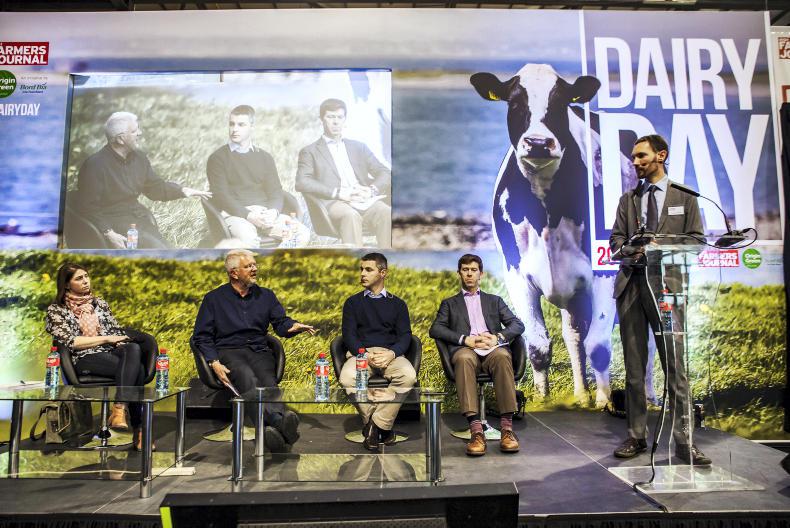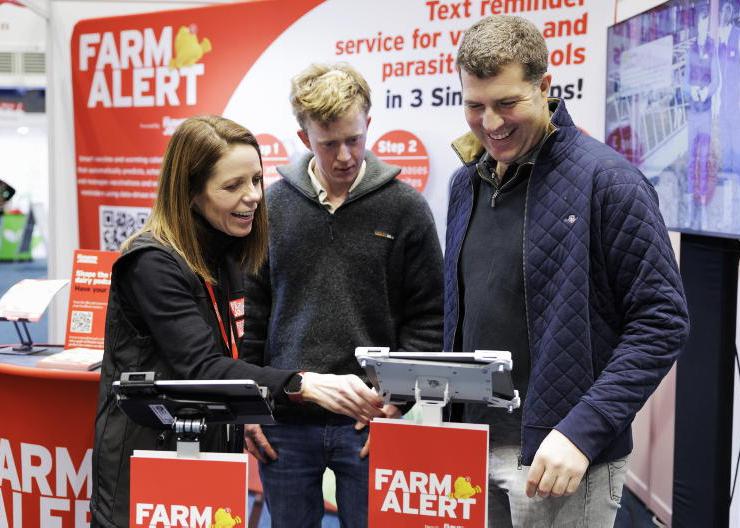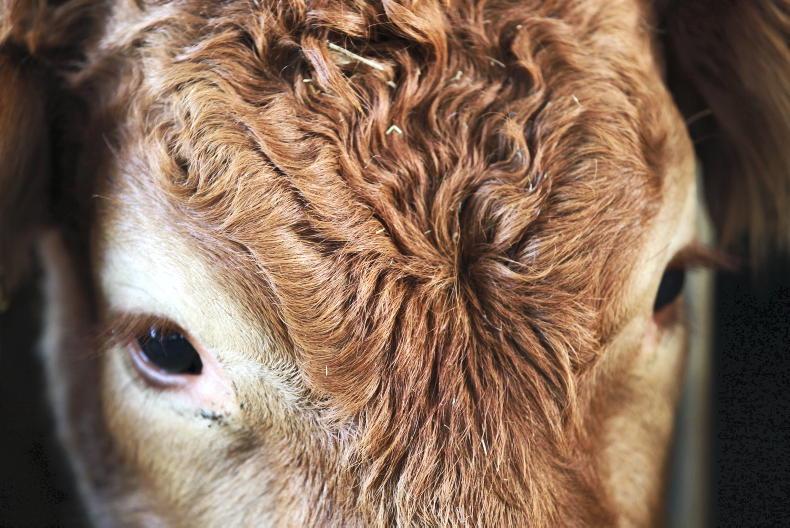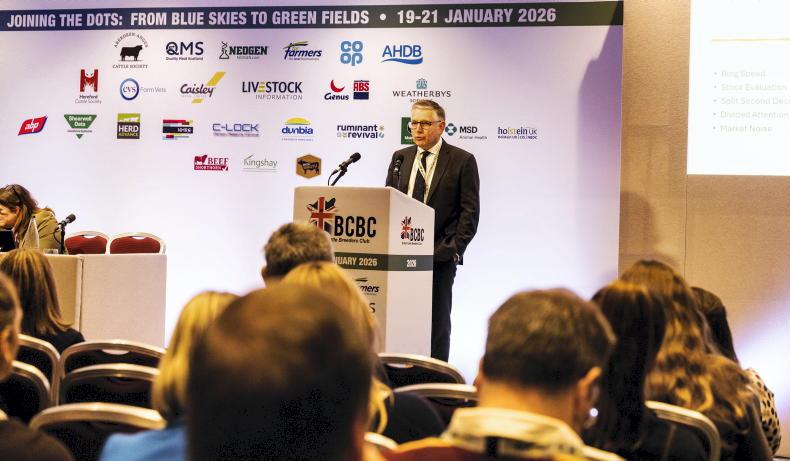Soil, grassland, breeding and health efficiency will save dairy farmers money while helping the industry meet its environmental obligations and defend its green image, according to participants in the recent Dairy Day conference organised by the Irish Farmers Journal.
Increasing dairy cows numbers have contributed to the rise in Ireland’s greenhouse gas emissions since the abolition of quotas, but a lot can be done to address this – “first and foremost, soil testing,” said John Muldowney, senior inspector in the Department of Agriculture’s climate change and bioenergy section. “How many farmers are actually doing a soil test out there and, following that, plan very closely to achieve optimal soil fertility levels?” Muldowney asked, as Teagasc figures show that only one in 10 Irish fields is at optimal pH and phosphorus levels. Improving nitrogen management not only cuts costs and nitrates pollution of water, it also reduces emissions of nitrous oxide, a potent greenhouse gas, he added.
Add better grassland management and we can “utilise more grass at pasture as best as we can with as little nitrogen use as possible to try and reduce emissions and the input requirements of farms,” he said.
The next priority should be breeding. While acknowledging a strong EBI uptake, Muldowney warned: “Fifty per cent of dairy farmers are still using replacements bred by a stock bull. That’s just not good enough.”
Once they have produced their own replacements, many farmers also stop recording sire information for stock sold off the farm, undermining efforts to improve dairy-bred beef animals. “It wouldn’t be acceptable to have cull calves out of the dairy sector. We have to remember the growth of the dairy sector depends on green credentials of the country and that includes animal welfare,” Muldowney said.
He added that animal health on dairy farms must be “second to none”, despite the challenges associated with expanding herds. “Otherwise you’ll have sub-optimal production and be carrying idle cows on your farm. Those idle cows are producing methane which is driving emissions,” he said.
Between increased profitability, better resilience to changing weather patterns, and the defense of Ireland’s green credentials, Muldowney said farmers had many reasons to take up these challenges, with regulation needed only as a second step: “There’s a lot of work that is out there and is moving, but just needs to move quicker than today.” Teagasc advisor Noel Meehan shared the same view from a nitrates and water-quality perspective. “That’s what we’re all about: it’s going to save the farmer money as well as benefiting the environment,” he said.
Co Waterford dairy farmer Gillian O’Sullivan said she has put this advice into practice. “We soil sample every second year,” she said, and her farm’s pH has risen from 5.8 to 6.2. She targets grazing to paddocks at the optimum three-leaf stage, between 1,200 and 1,500kgDM/ha cover.
“Cows that are on a highly digestible diet of that type of grass produce less methane. Their rumen doesn’t have to work so hard to break down the fibrous content,” she said. Yet despite these efforts, Ireland’s greenhouse gas and ammonia targets still seem very challenging and some will be missed.
“We can do all these things, they can be implemented on the farm. But for the ‘what if’, farmers just need a little bit of assurance,” she said. “What’s going to happen to the farmer? I’m still waiting for an answer.”
Economist John Fitzgerald, who chairs the State’s Climate Change Advisory Council, will advise the Government on agriculture next year.
“We do have to make changes, we probably have to reduce the number of cattle, but offsets are possible. For example, if you maintain the dairying that is very valuable, reduce significantly the beef cattle, and use the land freed up for biomass and forestry,” he said. “That could turn out to be the climate consistent result for agriculture, but the Department of Agriculture needs to map this out.”
Read more
New EU legislation to facilitate farm-level renewables
Dairy Day: sustainability a ‘huge issue’ for retailers
Can New Zealand farming claim to be 'zero warming'?
Incentives needed for farmers to fight climate change – Boyle
Soil, grassland, breeding and health efficiency will save dairy farmers money while helping the industry meet its environmental obligations and defend its green image, according to participants in the recent Dairy Day conference organised by the Irish Farmers Journal.
Increasing dairy cows numbers have contributed to the rise in Ireland’s greenhouse gas emissions since the abolition of quotas, but a lot can be done to address this – “first and foremost, soil testing,” said John Muldowney, senior inspector in the Department of Agriculture’s climate change and bioenergy section. “How many farmers are actually doing a soil test out there and, following that, plan very closely to achieve optimal soil fertility levels?” Muldowney asked, as Teagasc figures show that only one in 10 Irish fields is at optimal pH and phosphorus levels. Improving nitrogen management not only cuts costs and nitrates pollution of water, it also reduces emissions of nitrous oxide, a potent greenhouse gas, he added.
Add better grassland management and we can “utilise more grass at pasture as best as we can with as little nitrogen use as possible to try and reduce emissions and the input requirements of farms,” he said.
The next priority should be breeding. While acknowledging a strong EBI uptake, Muldowney warned: “Fifty per cent of dairy farmers are still using replacements bred by a stock bull. That’s just not good enough.”
Once they have produced their own replacements, many farmers also stop recording sire information for stock sold off the farm, undermining efforts to improve dairy-bred beef animals. “It wouldn’t be acceptable to have cull calves out of the dairy sector. We have to remember the growth of the dairy sector depends on green credentials of the country and that includes animal welfare,” Muldowney said.
He added that animal health on dairy farms must be “second to none”, despite the challenges associated with expanding herds. “Otherwise you’ll have sub-optimal production and be carrying idle cows on your farm. Those idle cows are producing methane which is driving emissions,” he said.
Between increased profitability, better resilience to changing weather patterns, and the defense of Ireland’s green credentials, Muldowney said farmers had many reasons to take up these challenges, with regulation needed only as a second step: “There’s a lot of work that is out there and is moving, but just needs to move quicker than today.” Teagasc advisor Noel Meehan shared the same view from a nitrates and water-quality perspective. “That’s what we’re all about: it’s going to save the farmer money as well as benefiting the environment,” he said.
Co Waterford dairy farmer Gillian O’Sullivan said she has put this advice into practice. “We soil sample every second year,” she said, and her farm’s pH has risen from 5.8 to 6.2. She targets grazing to paddocks at the optimum three-leaf stage, between 1,200 and 1,500kgDM/ha cover.
“Cows that are on a highly digestible diet of that type of grass produce less methane. Their rumen doesn’t have to work so hard to break down the fibrous content,” she said. Yet despite these efforts, Ireland’s greenhouse gas and ammonia targets still seem very challenging and some will be missed.
“We can do all these things, they can be implemented on the farm. But for the ‘what if’, farmers just need a little bit of assurance,” she said. “What’s going to happen to the farmer? I’m still waiting for an answer.”
Economist John Fitzgerald, who chairs the State’s Climate Change Advisory Council, will advise the Government on agriculture next year.
“We do have to make changes, we probably have to reduce the number of cattle, but offsets are possible. For example, if you maintain the dairying that is very valuable, reduce significantly the beef cattle, and use the land freed up for biomass and forestry,” he said. “That could turn out to be the climate consistent result for agriculture, but the Department of Agriculture needs to map this out.”
Read more
New EU legislation to facilitate farm-level renewables
Dairy Day: sustainability a ‘huge issue’ for retailers
Can New Zealand farming claim to be 'zero warming'?
Incentives needed for farmers to fight climate change – Boyle











SHARING OPTIONS